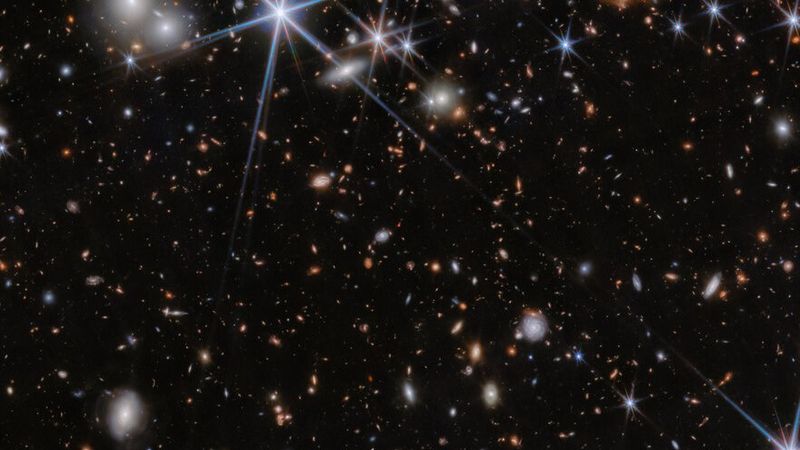Astronomers have been excited by outbursts of the exploding comet Pons-Brooks, each of which has caused it to brighten up to 100 times. For those in the know, reports of its post-explosion magnitude tell them whether it's worth trying to spot the travelling ice-volcano, or if that's an impossible dream. It's a common story with comets and other temporary visitors to our skies. Those unfamiliar with the lingo, however, may miss out on something that might have been their entry to the excitement amateur astronomy can bring. Worse still, others spend hours in a cold field looking for something they have no chance of seeing.
Even if you're not planning to go looking yourself, the magnitude of an astronomical object can be an important feature of information about it, and something we include quite frequently. So it's time for an explainer.
Astronomical magnitude has ways of puzzling those new to the topic. The first issue people often encounter is that larger magnitudes are fainter than smaller ones. Indeed, the brightest objects – such as the Sun, Moon, and Venus – have negative magnitudes. A negative magnitude comet or exploding star doesn't sound very exciting, but it's actually a once-in-a-generation event you really don't want to miss.
The first issue makes much more sense when you understand the origins of the magnitude scale. In the second century, the astronomer Ptolemy realized that most of the really bright stars he could see (other than Sirius) were of reasonably similar brightness, and categorized them as “first magnitude stars”. Those that were modestly but notably fainter were second magnitude, and so on.
This became the basis of our current system, but has since been put on a more rigorous footing. Vega is considered to have a magnitude of zero. Sirius, along with some planets and two stars too far south for Ptolemy to see easily, gained negative designations.
A magnitude of 1 (for example the star Spica) is 2.52 times fainter than Vega. Magnitude 2 is 2.52 times fainter again (Polaris is the most famous example). If 2.52 seems like an odd choice, it's used because it means that stars 5 magnitudes apart will be 5 times as bright as each other.
A Few Significant Examples
| Object | Magnitude |
| Sun | -27 |
| Full Moon | -13 |
| Venus (maximum) | -4.8 |
| Sirius | -1.5 |
| Supernova 1987a (peak) | 2.9 |
| Supernova 1054 (cause of Crab Nebula) | -6 |
| Comet Pons-Brooks (now) | 12.7 |
| Comet Pons Brooks (predicted peak without explosion) | 4.3 |
| Comet Pons-Brooks (potential maximum with well-timed explosion) | 0 |
Optical instruments have allowed us to extend things much further. Under dark skies, it's usually possible to see down to magnitude 10 with a good pair of binoculars – and a backyard telescope can take you into the low teens. The JWST can see galaxies with magnitudes of 34. In all of these cases, each additional magnitude means being fainter by a factor of 2.52, or 100 to the power of one-fifth.
Complicating Factors
Magnitude is not always constant, however. Catalogs often list the variable star Betelgeuse as having a magnitude of 0.5, but during its great dimming of 2019-20 it got down to 1.7. Then this year it was 50 percent brighter, giving it a magnitude of 0.0. Planets can vary by even more. During a close passage such as 2018, Mars can reach magnitude -2.9, but even when it emerges from behind the Sun it will only be about 1.4.
A low magnitude is also no guarantee that we can see something. Besides city lights and clouds, other objects in the sky can hinder our view. Comets are usually brightest when close to the Sun in their orbit, and unless the Earth's location is very fortunate, this tends to make the two line up for us. Even a very low magnitude comet is hard to see if it sets while it's still twilight.
Another problem is that there is more than one magnitude to an object. Most of the time, when we refer to something astronomical's visual magnitude, we mean how bright it looks to the ordinary observer on Earth, technically known as apparent magnitude. Occasionally, however, related but different magnitude scales become relevant.
There are times when it's more important to talk about an object's absolute magnitude. A star that is relatively close to Earth will appear brighter than a similar one much further away. Consequently, astronomers have created absolute magnitude to measure intrinsic brightness. For stars, this measures how bright they would appear at a distance of 10 parsecs (32.6 light years).
For planets, asteroids, or comets, however, such a distance is fairly useless – almost none of them would be visible from so far away even with our most powerful telescope. Therefore, the absolute magnitude of objects reflecting sunlight is measured at a distance of one astronomical unit (distance of the Earth to the Sun).
There is one final aspect that is worth mentioning, since we have talked so much about comets. When discussing something we see as a faint blob, rather than a single point of light, the magnitude is the accumulation of all the brightness we can see. When dealing with light pollution or interference from the Moon, dispersed light is far more affected. Thus sometimes you may struggle to see a fourth magnitude comet or nebula with binoculars or a small telescope, when a fourth magnitude star in the same field of view is easy to spot.
Something to remember if 2024's comets live up to hopes.
All “explainer” articles are confirmed by fact checkers to be correct at time of publishing. Text, images, and links may be edited, removed, or added to at a later date to keep information current.




